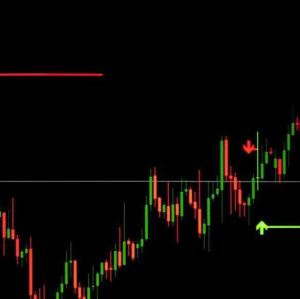实时股票走势图最新
Title: Understanding RealTime Stock Market Trends
Realtime stock market trends are crucial for investors, traders, and financial analysts to make informed decisions in the dynamic world of finance. This article explores the significance of realtime stock charts, the tools used to analyze them, and strategies for interpreting and acting upon the information they provide.
Realtime stock charts offer a snapshot of a stock's performance at any given moment. Understanding these trends is essential for:
- Timely decisionmaking: Investors can react swiftly to market movements, minimizing losses or maximizing gains.
- Technical analysis: Traders utilize realtime charts to identify patterns and indicators that signal potential buy or sell opportunities.
- Risk management: Monitoring realtime trends helps investors assess and mitigate risks associated with their investment portfolios.
- Market sentiment analysis: Observing how stocks react to news and events in realtime provides insights into investor sentiment and market dynamics.
Several tools and platforms facilitate the analysis of realtime stock market trends:
- Trading platforms: Brokers offer realtime charts with customizable indicators and overlays to help traders analyze stock performance.
- Financial websites: Websites like Yahoo Finance, Google Finance, and Bloomberg provide free access to realtime stock charts and market data.
- Charting software: Advanced charting software such as TradingView and MetaTrader offer comprehensive tools for technical analysis.
- Mobile apps: Many mobile apps provide realtime stock quotes, news updates, and customizable charting features for onthego analysis.

Interpreting realtime stock charts requires an understanding of key concepts and technical indicators:
- Candlestick patterns: Candlestick charts display price movements over a specific time period, with each candle representing open, high, low, and close prices. Patterns like engulfing, doji, and hammer provide insights into market sentiment.
- Technical indicators: Indicators such as moving averages, relative strength index (RSI), and MACD help traders identify trends, momentum, and potential reversal points.
- Volume analysis: Volume indicates the number of shares traded during a given period, providing clues about the strength of price movements and potential trend reversals.
- Support and resistance levels: These levels represent price points where stocks tend to find buying or selling pressure. Breakouts above resistance or below support can signal trend continuation or reversal.
Based on realtime stock market trends, investors and traders can implement various strategies:
- Day trading: Capitalize on intraday price movements by buying and selling stocks within the same trading day based on realtime chart patterns and indicators.
- Swing trading: Hold positions for several days or weeks to capture short to mediumterm trends identified through technical analysis of realtime charts.
- Position trading: Take longterm positions based on fundamental analysis while using realtime charts to optimize entry and exit points.
- Algorithmic trading: Develop automated trading strategies that execute buy and sell orders based on predefined criteria and realtime market data.
Realtime stock market trends play a pivotal role in shaping investment decisions and trading strategies. By leveraging tools for analysis and interpreting key indicators, investors can navigate the complexities of the stock market with confidence. Whether you're a novice investor or seasoned trader, staying informed about realtime market dynamics is essential for success in the everevolving world of finance.
免责声明:本网站部分内容由用户上传,若侵犯您权益,请联系我们,谢谢!联系QQ:2760375052








